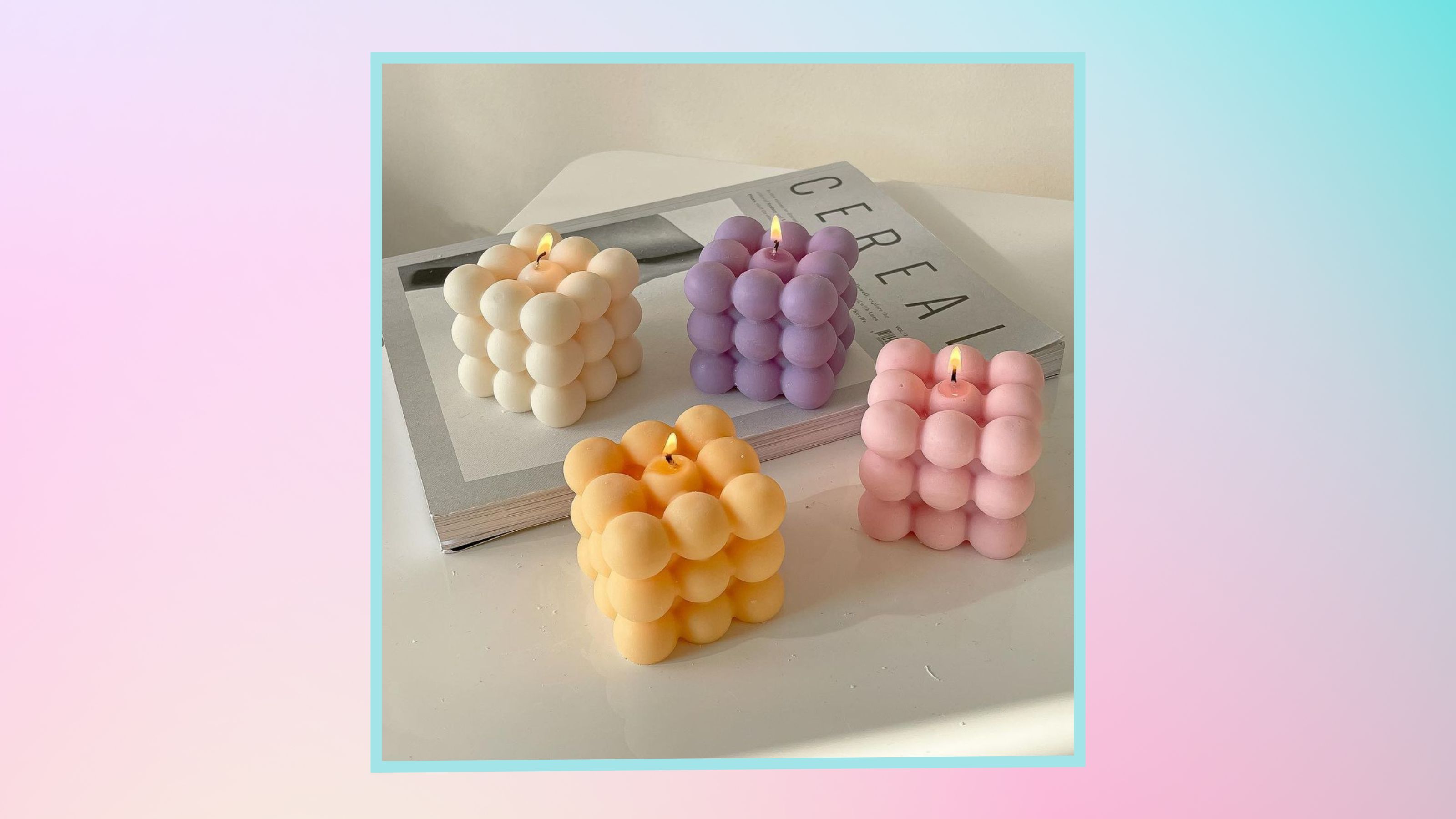FYI: Here's how to care for candles and make them last longer
Take it from a gal who makes her own


It’s easy to assume that all you’ve gotta do is pick a pretty, nice-smelling candle and you’re good to go, right? Wrong. Candles actually need a little care and adequate maintenance, if you’re going to get the most out of them, that is. Believe it or not, there’s a right way and a wrong way to use and take care of your candles.
I mean, you’d think that all you’ve gotta do to get the most out of your candles is to burn them and enjoy the scent, right? And yet, that isn’t the case. To get the very best out of your candles they need to be properly looked after and carefully cared for.
How do I know this? Well, as someone who makes and sells homemade candles, I’ve learned a hell of a lot about candle maintenance and care. I even bought a book about it. Yep, seriously! And honestly, if you give your candles a little TLC they’ll not only last longer, but they’ll burn better and — believe it or not — they’ll smell better too.
Want to take better care of your candles and ensure that they stay in tip-top shape? I’ve got you covered!
How to take better care of your candles
Ensure an even burn
The first rule of candle care is to make sure that your candles burn evenly so that you’re not left with a tunneled candle. Before we go into how to prevent candle tunneling, let’s look at what causes it in the first place. There are two main causes of tunneling — placing your candle near a draft and not letting it burn for long enough the first time it’s lit.
You need to let it burn long enough for the entire surface of the candle to melt before you blow it out. You see, if you don’t allow the entire top surface to melt, you may end up with a candle that tunnels and leaves a wax ring around the top of the jar that never ends up melting. So, if you’re short of time, don’t be tempted to light a new candle.
Helpful hint: If your candle has already tunneled, you can fix it by wrapping the candle in a piece of aluminum foil and lighting the wick as normal, allowing it to burn until all the built-up wax melts.
Get small space home decor ideas, celeb inspiration, DIY tips and more, straight to your inbox!
Keep candles clean
Once you’ve burnt a candle once or twice, you might notice that soot and loose pieces of candle wick start to appear on the top of the candle. This kind of debris can end up causing the entire top of the candle to ignite, instead of just the wick. But, by keeping candles clean and removing debris from them, you can reduce the chances of this happening to your candles and the wax or container being damaged as a result. To remove soot and other debris, use a clean piece of paper towel, and for wick trimmings use a pair of tweezers to remove them from the wax.
Trim the wick
If you want to ensure that you always get a clean and even burn, it’s vital that you keep candle wicks trimmed to the correct length. It might sound kinda strange but the length of your candle wicks impacts the burn. So, before lighting a candle, check that the wick is below 0.25 inches (the recommended ideal burn length) — if it’s longer than this, trim the wick using a pair of sharp scissors or a wick trimmer, like my favorite matte black wick trimmer from Amazon.
Helpful hint: Make sure not to trim the wax too low, otherwise it may get drowned in wax as the candle heats up and the wax around it melts.
Put your candle out carefully
When putting your candles out, make sure to do so carefully, otherwise hot wax may splatter everywhere. It’s fine to blow a candle out but it’s important to do it slowly, so as not to blow hot wax onto the wick and candle container. If the candle comes with a lid, it’s often easier to put the lid back on to put the candle out. Alternatively, if you have a snuffer you can use that to put your candle out.
Don’t burn your candle too low
I know, I know, it’s tempting to want to burn every last drop of your candle’s wax, especially when it smells utterly divine — like this Molten Brown candle (available from Amazon) that I am totally obsessed with — but if you let the candle burn all the way down, the container may overheat and could even crack. So, it’s advisable to stop burning your candle when it has 0.5 inches of wax left in it.
Handy hint: If you don’t like to waste the last of the wax, you can always scrape it out using a spoon, melt it down, and pour it into a wax melt mold to create your own DIY wax melts. That way, you’re not wasting any wax but you’re using your candles safely.
Store your candles the right way
Unfortunately, over time your candles can begin to spoil — which means that they start to lose their scent and may also become a little discolored. And, FYI, if you store your candles in direct sunlight, this process is likely to occur far more quickly than you would imagine. The best place to store your candles is in a cool, dark place, away from direct sunlight. If your candles come with lids, make sure that you use them to preserve the wax and scent.
Burn your candles for the right amount of time
It might sound kinda odd — surely you can burn your candles for however long you please — but candles actually do have right and wrong burn times. A super common candle care mistake is letting candles burn too quickly or for too long. It’s advisable to burn candles for around three to four hours at a time to prevent tunneling, ensure an even burn, and fill the room with scent.
Make candles last for longer
While there are a number of hacks that you might have heard of for extending candle burn time — like sprinkling salt around the wick — your best bet for a longer burn time is to opt for candles that are designed to burn for longer. Natural candles made from beeswax, soy wax, and coconut wax have a much longer burn time than petroleum-based candles made from paraffin wax. So, for an extended burn time, opt for natural wax candles.

Hi! I’m Beth Mahoney and I’m a former staff writer at Real Homes. I’ve been a journalist for the national press for the past six years, specializing in commerce and trends-related lifestyle articles, from product reviews and listicles to guides and features. With an eye for pretty things (think: quirky wall prints, scalloped edge furniture, and decadent-looking tableware) but a limited budget, I love nothing more than a bargain buy.